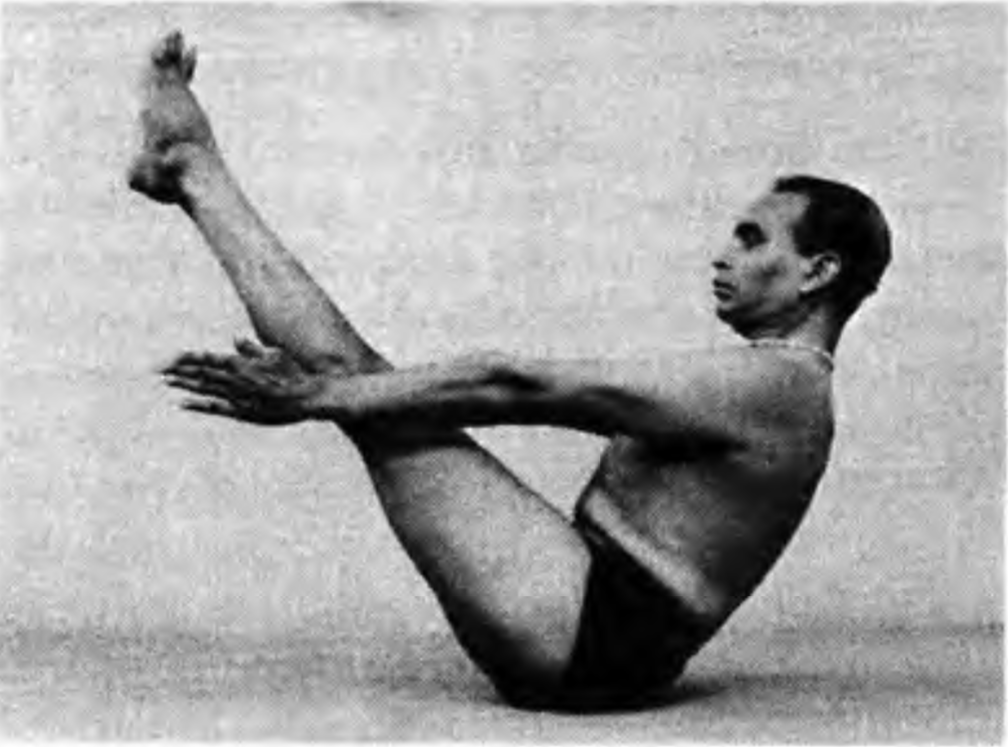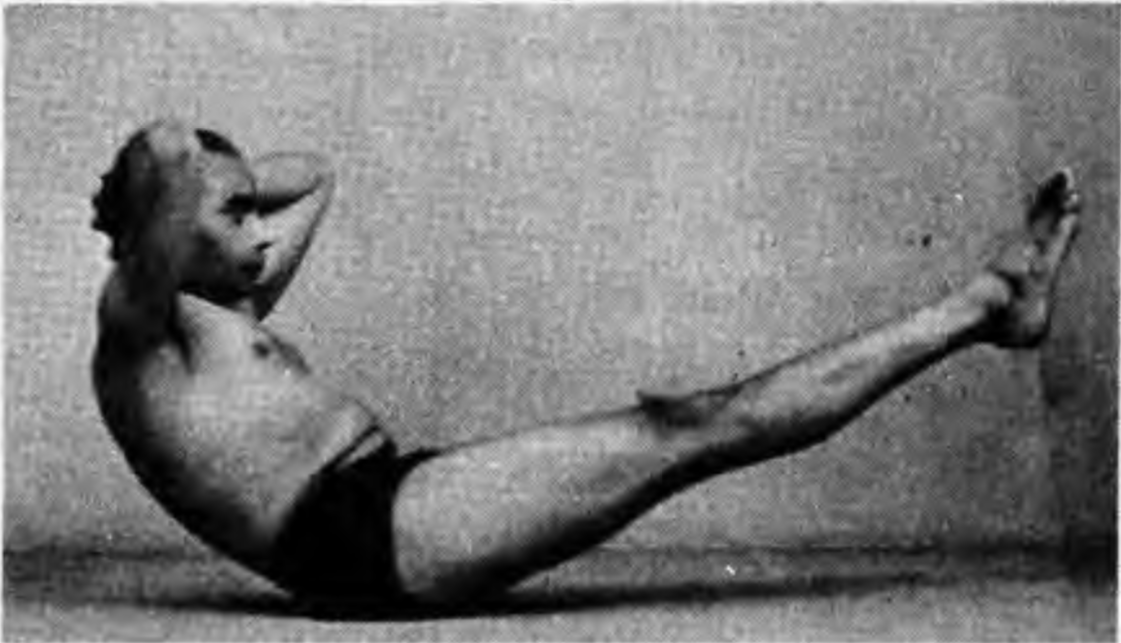Search your article
Ardha Navasana
Ardha Navasana – 2
Ardha means half. Nava is a ship, boat or vessel. This posture resembles the shape of a boat, hence the name.
Technique
1 . Sit on the floor. Stretch the legs out in front and keep them straight.
2. Interlock the fingers and place them on the back of the head just above the neck.
3· Exhale, recline the trunk back and simultaneously raise the legs from the floor, keeping the knees tight and the toes pointed. The balance of the body rests on the buttocks and no part of the spine should be allowed to touch the floor. One feels the grip on the muscles of the abdomen and the lower back.
4· Keep the legs at an angle of about 30 to 35 degrees from the floor and the crown of the head in line with the toes.
5. Hold this pose for 20 to 30 seconds with normal breathing. A stay for one minute in this posture indicates strong abdominal muscles.
6. Do not hold the breath during this asana, though the tendency is always to do it with suspension of breath after inhalation. If the breath is held, the effect will be felt on the stomach muscles and not on the abdominal organs. Deep inhalation in this asana would loosen the grip on the abdominal muscles. In order to maintain this grip, inhale, exhale and hold the breath and go on repeating this process but without breathing deeply. This will exercise not only the abdominal muscles but the organs also.
7. The difference between Ardha Navasana and Paripura Navasana should be noted in the latter, the legs are moved higher and the distance between them and the stomach is less than in the former.
Effects
The effects of Ardha Navasana and that of Paripurna Navasana (Plate 78) differ due to the position of the legs. In Paripurna Navasana the exercise is effective on the intestines; whereas, Ardha Navasana works on the liver, gall bladder and spleen. In the beginning, the back is too weak to bear the strain of the pose. When power to retain the pose comes, it indicates that the back is gaining strength. A weak back is a handicap in many ways, especially to women as they need strong backs for child-bearing. These two asanas coupled with lateral twistings of the spine will help to strengthen the back. The importance of having a healthy lower back can be realised if we watch old people when they sit down, get up and walk, for consciously or unconsciously they support their backs with their hands. This indicates that the back is weak and cannot withstand the strain. As long as it is strong and needs no support, one feels young though advanced in age. The two asanas bring life and vigour to the back and enable us to grow old gracefully and comfortably.

